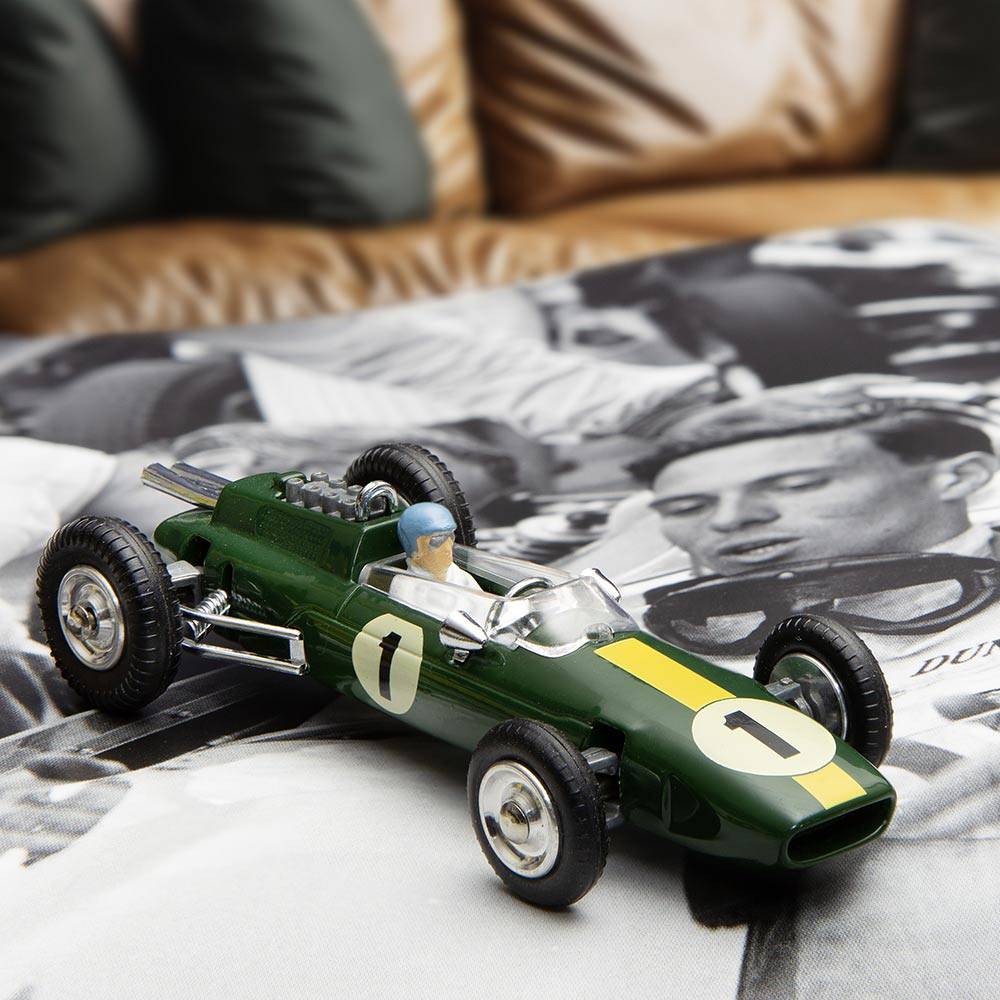It was Clark's partnership with the design genius Colin Chapman that put them both on the podium and roaring into the history books. Chapman's innovative design thinking turned Formula One completely on its head, giving his Lotus Climax a tubular monocoque chassis, an ultra-lightweight glass fibre body and steeply inclining the driving position – something that Clark took him some time to get used to.
At first, the bigger and well-funded F1 teams laughed at Chapman's latest ‘Garagista’ design – a name coined for the underfunded but plucky and innovative British racing teams that operated out of small workshops and lock-up garages up and down the country. But after the first Grand Prix of the 1963 season, the laughter quickly turned to panic as Clark’s Lotus left the rest of the field trailing in his slipstream.
In one fell swoop, the big lumbering behemoths of the inter-war and post-WWII years were consigned to the scrap heap. The agile, wasp like Lotus with its disc brakes, superb handling – derived from an even weight distribution across front and rear – was able to corner at speeds that were previously believed impossible. Combined with a lightweight Coventry Climax engine and a naturally talented driver such as Clark, the Ferrari, Maserati and Mercedes cars never stood a chance!
A racing superstar is born
Clark won 14 races in 1963 and swept all before him to win that year's Formula One championship. He would also have been champion in 1964 had his Climax engine not blown within sight of the finish line in the final race of the season. In 1965, he and his Lotus 25 returned, landing a famous double – both the constructor’s and driver’s championship – with a sweet Indianapolis 500 victory in between for good measure.
Clark and this famous Lotus became the perfect embodiment of man and machine in the brave new world of the 1960s, where engineers were breaking new ground in motor sport and aerospace. It was a decade when Formula One changed forever – but not always for the better. Whilst the cars drove at death defying speeds, life as a driver and spectator became ever more hazardous. Many drivers infamously perished on the dangerously twisty and often remote grand prix tracks – with little more protection than inflammable hay bales! Sadly, Jim Clark was one of them. His death at Hockenheim in 1968 was met with disbelief and incredulity. If such a talented driver could be killed, what chance did lesser mortals have?
The legend lives on
At the time of his death, Clark had won more Grands Prix races and achieved more pole positions than any other driver. In 2009, The Times newspaper placed Clark at the top of the all time greats of Formula One. That's some accolade for a driver who raced and died some four decades before.
Like Clark and his Lotus, Corgi Toys were at their zenith during the 1960s – a world-beater in their own right, creating die-cast models out of their Swansea factory that thrilled and entertained a generation of children. Corgi did the victorious Lotus proud by issuing it in its 1964 British Racing Green livery, complete with a miniature Jim Clark at the wheel and his number one marking, reserved only for World Champion drivers. For a die-cast model of the era it has an impressive array of details. with steering wheel, wing mirrors and windshield. There's also a silver engine block, springy wishbone suspension and removable tires. The attention to accuracy on what was a child's toy is laudable – right down to different sized wheels at the front and rear. Accuracy is our watchword here at the Corgi Model Club!











